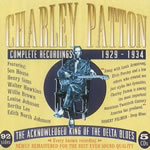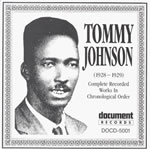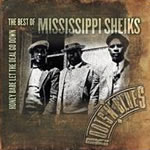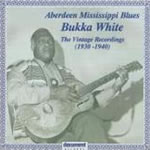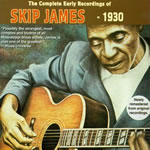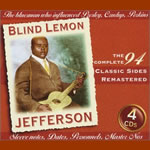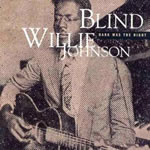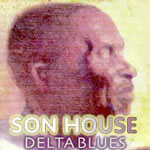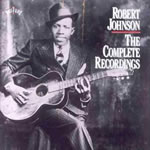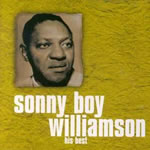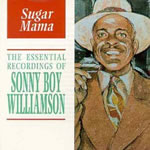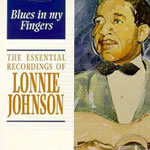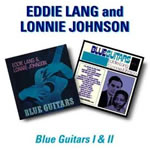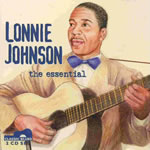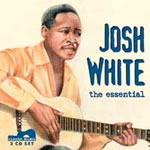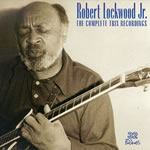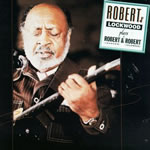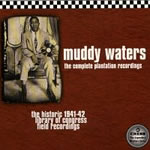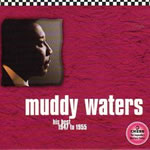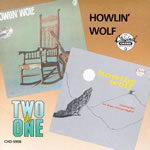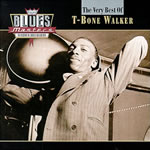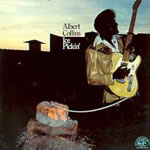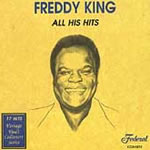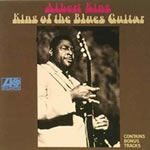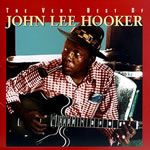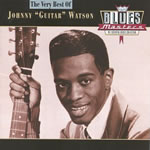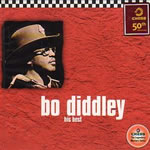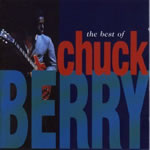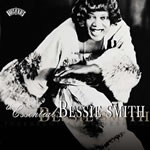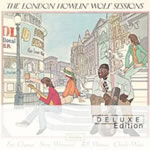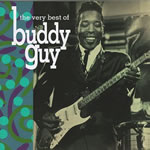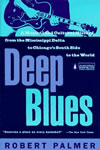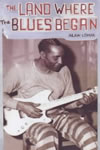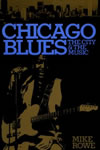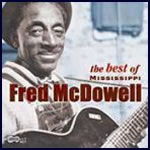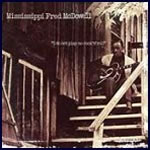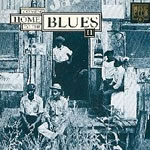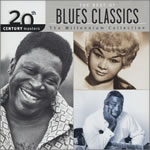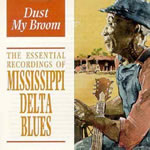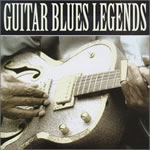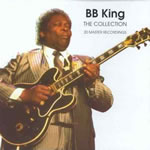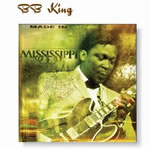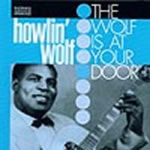The Blues came out of the South with a leap and a howl. A wailing music that bemoans oppression but sets the spirits free. And while moaning makes incisive comments about the world, work and love. After being worked to the limit all week, Blues is the one night a week you can let loose. It is the afternoon picnic after Church, because every other day is chopping cotton, cutting lumber, loading riverboats, or building the Mississippi levee. Blues came out of a hard, hard world.
The earliest form is often called Delta Blues — actually from north Mississippi , not the river delta — but the music erupted spontaneously from Florida to California in the early twentieth century. It started with just a song — a field-holler, the levee muleteer coaxing his mule, or Sunday’s Baptist Church call-and-response — out of which came the guitar Blues of the plantations. Rough instruments from which callused hands wrested streams of silver and gold. A different Blues appeared supported by Jazz piano players in the urban taverns.
Blues is a unique musical style, built solidly on complex African rhythms. Fife and drum bands, and a long folk tradition gave it a strong base. A string tied to the wall by kids and played percussively — the jitterbug — gave way to the $2.50 Sears and Roebuck mail-order guitar at the end of the nineteenth century, and the Blues had found its instrument.
In 1902, in Missouri, Ma Rainey heard a young girl singing a mesmerising song and brought it into her own act. The next year, W.C. Handy transcribed a tune called a blues for his travelling ragtime band, after hearing a plaintive rendition by a slide guitar player at Tutwiler railway station, Mississippi. But these were imitations, the real Blues was down on the plantations, and found its centre in Charley Patton, down on Dockery Farms on the Sunflower river, a hundred miles upriver of Vicksburg, near Cleveland, Mississippi.
Charley Patton slouches back there at the beginning of the Blues, a scowl on his face. A brown-eyed man winking his offer to be some woman’s backdoor man. They called him a workshy, womanising drunk, and they said he was hellbound, but at the juke joints he brought the angels down to dance. He was the founding influence of Blues. His own teacher, the mysterious Harry Sloan, was one of the first guitarists in the Blues style. Like Jimi Hendrix and Nina Simone, Charley Patton had both Indian and white blood.Some major league bluesmen learned from Patton, including Tommy Johnson, Willie Brown, Bukka White, Son House and Howlin’ Wolf. Charley Patton was no virtuoso guitarist, but the pleading, soul-rending intensity is right there, and his overlaying of rhythms is masterful.
Blues came to be known as the Devil’s music, and there are many stories of God-fearing parents trying to stop their children from playing the guitar, including Bill Patton, who even took a whip to his boy Charley. Blues musicians did nothing to decrease this superstitious fear. Like Rock musicians, many revelled in their hellraising image. Tommy Johnson said the Devil had tuned his guitar one midnight at the cross roads, that sacred meeting place of earthly travellers and spirit guides. Ever after the Blues flowed out of him.The Country Blues was played in juke joints, fuelled by moonshine whiskey and canned heat — alcohol strained out of polish. Jubilant drunkenness was the only way that many blacks could survive the back-breaking, soul-wrenching realities of the working week. Coming off work at midday on Saturday, they would drink until stupefied, and while they were drinking, they wanted to dance. Most of Hendrix’s audience did not realize that his onstage antics — playing the guitar behind his back, between his legs or with his teeth — were in the tradition of the original Blues.
The Chatmon brothers were cousins of Charley Patton, and at least one of them — violinist Lonnie — belonged to the Mississippi Sheiks at any given time. They had a huge hit with the wonderful Sitting on Top of the World. Honey Babe Let the Deal Go Down also features singer Texas Alexander on a few tracks. Another Chatmon brother was the eminent Blues pianist, Memphis Slim. Bukka White was around at the beginning, too, and has a distinctive feel. And no collection would be complete without the piercing Blues of Skip James. He was lost to the music for thirty years, before being rediscovered in a hospital in the ’60s. Royalties from his 1930s recordings paid his hospital bills, and he returned to the stage at the Newport Festival.The new music emerged with the new century, less than four decades after the abolition of slavery in the US. It displaced other forms of folk song in the Southern Black communities, by the 1920s becoming the dominant music, and always feeding the hunger of Jazz, as it does to this day. From very near its beginnings, Jazz took contributions from eager whites, too, but Blues remained a race music for nearly six decades.
Commercial artists copied the new music, and after the success of Mamie Smith’s Crazy Blues, the record companies began to look for authentic Blues to take advantage of the huge market among poor blacks. By the 1930s when the economic depression hit, many original Blues performers had recorded.
Street entertainers began to pick up the new music. The first to really turn a buck from his records was Blind Lemon Jefferson. He recorded 94 tracks in the last four years of his life — 1925-1929 — for a few dollars a side. Like so many bluesmen, Lemon Jefferson also pandered to the religious market — as Deacon L.J. Bates. His career started before the 1914-18 war, working alongside the great Leadbelly, in Texas. In the apprenticeship tradition of the Blues, T-Bone Walker, later a pioneer of the electric guitar, claimed that as a kid he led the almost blind musician around the streets of Dallas, looking for likely corners on which to busk. Blind Willie Johnson wasn’t pandering to anything. He was an inspired, God-fearing Gospel Blues singer, and his recordings shine with a peerless intensity. Ry Cooder took a phrase from Johnson’s amazing Dark was the Ground, Cold was the Night for his famous soundtrack to Paris, Texas. His gruff voice compels, and Eric Clapton has said that his Nobody’s Fault But Mine is the finest slide guitar on record. Led Zeppelin recorded a cover.For decades, the most popular music among white Americans when the Blues began was Minstrel music, in which whites with shoe-blacked faces aped the antics of the underclass, ridiculing them. The first talking picture, The Jazz Singer, made in 1929, starred the most famous of these minstrels, Al Jolson. Into the 1960s BBC television hosted the prime-time Black and White Minstrel Show. While whites made their puerile imitation, a new art form came into being and flourished along the backroads of the American South.
Son House was a major influence on both Robert Johnson and Muddy Waters. He had a genuinely spine-chilling delivery at times, and the darkest growl. Film in the ’60s shows him hammering a steel guitar. It’s hard to imagine a wooden soundboard lasting a single night under such a furious assault. Son House was well-known in his day, but although such innovators sometimes picked up a dollar or two more than the impoverished cotton sharecroppers, not one of them became wealthy. A new redneck law, named after a minstrel song, roamed the South. The Jim Crow law kept the races apart in every public place. The New Orleans creoles made Jass, and the Mississippi river blacks made the Blues. In the 1920s, a kid called Robert Johnson used to bug Charley Patton and Willie Brown at the jukes, until Willie finally showed him how to make chords. Son House chased the eager youngster away, until one day he wasn’t a youngster any more, but an absolute master of the Blues. Some say that he spent a year in jail with nothing but his guitar, others that he met his voodoo Legba one midnight at the cross roads. The blues had visited this fatherless sharecropper’s life — his sixteen-year-old wife died with their baby in childbirth. He remarried, but found lodgings when travelling by eyeing the widow-women. He recorded only twice, in 1936 and 1937, both times in Texas hotel rooms. By the time the legendary impresario John Hammond wanted him to headline at Carnegie Hall, Johnson was dead, poisoned by a jealous rival. He was 27 years old. Because of his mark on the Blues revival in the ’60s, he is probably the most influential bluesman in history, leaving a mark upon music like Louis Armstrong, Miles Davis or Jimi Hendrix. His haunting voice and dancing guitar are a marvel.Robert Johnson is hugely beloved of the likes of Eric Clapton, the Rolling Stones and Led Zeppelin. Clapton has kept Standing at the Cross Roads in his repertoire for decades, and the Stones did a heartfelt version of his Love in Vain. But his songs and his influence runs throughout music from the White Stripes through the Chili Peppers, from Steve Miller to Peter Green — who made two albums of covers in the ’90s. Clapton has recently followed suit with Me and Mr Johnson. Jimi Hendrix and Robert Johnson are bedrock, fundamental necessities for any guitarist.
Robert Johnson sometimes played alongside Rice Miller, also known as Little Boy Blue, but more usually called Sonny Boy Williamson II. He was almost twenty years older than Sonny Boy I. He came by his fellow bluesman’s name when a radio show announcer, knowing that Sonny Boy Williamson was the big star of race records, insisted that his new performer was that same Sonny Boy. Anything to get more listeners. Although both were fine harmonica players and great singers, neither could easily be mistaken for the other. John Lee ‘Sonny Boy’ Williamson never caught up with the man who had stolen his name. In 1948, he was killed on the street in Chicago by a mugger. John Lee — Sonny Boy I — was a splendid harp player who by the 1930s was the big seller of the Blues. He made the Blues harp a solo instrument, rather than just an accompaniment, and had an endearing vocal style. He was often accompanied by the great guitarist Big Bill Broonzy. Of course, Blues was still very much the music of the poor black community. Both Sonny Boys went on to become founders of the new urban Blues, usually associated with Chicago. From the 1920s, there was an enormous migration from the cotton fields and the docks of the South to New York and Chicago. Before we travel north, though, witness some of the horde of fine talent from the Country Blues. Some say that Robert Johnson must have made a pact with the devil to achieve his fine guitar technique, but he wasn’t the only virtuoso. Lonnie Johnson was born in New Orleans, the birthplace of Jazz. He was at ease playing with Eddie Lang, the leading Jazz guitarist of the twenties. Lonnie Johnson was also a fine singer with real charm. His version of He’s a Jelly-Roll Baker is superb (compare it to John Martyn’s fine remake on Solid Air — though Martyn omits the verse about the judge, and the free advert for Maxwell House coffee at the end). This track, and many other fine Blues performances can be found on Blues Collection — Fireworks (on the French EPM label CAD465). If you can find a copy, that is. The one Robert Johnson track has not had its scratch removed — but the Complete Recordings of Robert Johnson is a necessity, and perhaps the best starting place for an appreciation of the Country Blues. To widen that appreciation try The Essential Lonnie Johnson. Josh White was a continuing influence on Blues guitarists, as was his contemporary Big Bill Broonzy. Both can be found, alongside Blind Lemon Jefferson, Blind Willie McTell and Blind Willie Johnson on the excellent Columbia release Great Blues Guitarists — String Dazzlers (though it will have to be a second hand copy, as Sony, in its wisdom has withdrawn the whole fine series. Blues collections come and go like ripples in the Mississippi). The Essential Josh White is a good compilation.By the 1930s, southern blacks had realized that they could make something closer to a living in the meat markets of Chicago (the killing floors, immortalised by Howlin’ Wolf, Hendrix and Zeppelin). The musicians followed on, and by the 1940s, the style called Urban Blues had developed. The Bluebird Beat had transformed the downhome sound. Bluebird Records had a roster of successful artists, including Tampa Red, Washboard Sam, John Lee Sonny Boy Williamson, with his piping harmonica and his cheerful chat up lines, and the filigree embroidery of guitarist Big Bill Broonzy.
Rice Miller usurped Sonny Boy Williamson’s name in 1941, when he started to host King Biscuit Time on the radio in Helena, Arkansas. He was a brilliant harmonica player, and was accompanied by Robert Johnson’s only pupil, the exceptional Robert Lockwood, called Robert junior because of his childhood association with Johnson, who had often stayed with Lockwood’s mother during his travels.When they arrived in Chicago, the Beatles were asked what they would like to see. When they said ‘Muddy Waters and Bo Diddley’, their guide looked puzzled and said he would have to consult a map. He had never heard of either of these great men, who had actually put Chicago on the map for a generation of ardent British fans. The Rolling Stones took their name from a Muddy Waters’ hit. As a child, Jimi Hendrix heard Muddy Waters, and said ‘It scared me to death, because I heard all of those sounds... It was great.’
Blind Lemon Jefferson referred to muddy water in his fine Wartime Blues, but Muddy said his name came from his infant fondness for mud. His given name was McKinley Morganfield. He was born in Mississippi in 1915. Muddy Waters arrived in May 1943. He had already recorded for the Library of Congrees, down on the plantation, but now he wanted to sell records. He took up factory jobs, worked as a driver, and played whenever he could. Big Bill Broonzy took him under his wing, but it took a few years for him to break through. The new stars were Louis Jordan with his jump blues, and the sophisticated virtuoso pianist Nat King Cole. Muddy was told that his Country Blues was finished, so he tried to adopt the new styles, but it was when he played the downhome Blues that he had his first success, with the splendid I Can’t be Satisfied. Label boss Leonard Chess complained that he couldn’t understand what Muddy was singing about, and had to be talked into releasing the record. It sold out on its first day. That was in April 1948. Muddy Waters fronted one of the first successful electric bands, with the brilliant Little Walter playing harmonica, but Leonard Chess wouldn’t let him record this new style until 1951. The hits poured out, from Rollin’ Stone through a string of Willie Dixon songs including Hoochie Coochie Man. This is peak Blues, as fine as any ever made. No-one sang as openly about voodoo themes — Muddy was a hoochie coochie man, and his mojo never stopped working. His music is taut, smokey and sexual, with an obvious delight in life.This new style — electric Blues with a solid back-beat was being called Rhythm and Blues. This styly somehow became Rock and Roll when it was recorded by white artists. Muddy always let members of his band record, so Little Walter’s early recordings are actually that great harmonica player fronting Muddy’s band. His Juke was the great success of 1952. He took over Junior Wells’ band, and Wells joined Muddy. Muddy’s rhythm guitarist, Jimmy Rogers, also had hits backed by the band, including That’s All Right. His Chicago Bound is a joy.
Meanwhile, a scene was developing in Memphis, partly because of the first all-black radio station, WDIA, and partly because of Sun Records. A young B.B. King played the station, and took a spot as a DJ. The great Howlin’ Wolf finally gave up farming for a career in the Blues as he was about to turn forty. His is one of the great voices. Just hear him bellowing Spoonful. He was perhaps the greatest vocal influence on Captain Beefheart, too. His guitarists, first Willie Johnson and then Hubert Sumlin, were also highly influential. B.B. King is a living legend, his voice and smooth guitar style both instantly recognisable. Like the Wolf, he started to record with Sam Phillips at Sun, where Ike Turner became the house pianist. T-Bone Walker was the first great Blues innovator of the electric guitar, linking the origins of the guitar Blues to the new form. He began his experiments in about 1940, alongside the brilliant Jazz innovator Charlie Christian. There would be a stream of successors.A host of fine guitarists jostled for work in the hey-day of the urban Blues — the late forties through the fifties. B.B. King, Buddy Guy, Albert Collins, Freddie King, Albert King, and Johnny ‘Guitar’ Watson, to name but a few. John Lee Hooker was not so far away, in Detroit.
Albert Collins is maybe best heard in his 1978 album Ice Pickin’. The Blues boom had come and gone, but Collins kept on polishing his style, and with this album finally found the production he needed to show off his enviable chops. Albert King was an immediate inspiration to Clapton and his fellow British guitarists. In the late-60s he recorded at Stax with the marvellous Booker T and the MGs. Hear the results.Riley ‘B.B.’ King has retained his star position for almost six decades and deservedly so. His fluid, lyrical guitar style, and his fine voice have fronted bands from each decade. He made an album with The Crusaders at about the time they were discovering Randy Crawford. He has recorded with many fellow stars including Eric Clapton and U2. He has a courtly manner and a reputation for being sweet, too.
In his late seventies, John Lee Hooker became the elder statesman of Blues, making a come back in 1995, to play with Santana. He had hooked up with Canned Heat back when they were the hippie bluesters, played with the Yardbirds, and performed in a Pete Townsend musical. His songs have been recorded by everyone from Donovan to the Doors. This is a raw, unhurried music that harks back to the beginnings of the Blues. Johnny ‘Guitar’ Watson felt the wind change, and turned his coat lining-side out to become a funkster. But in his first incarnation, he was king of the west coast blues. He was the original gangster of love, long before Steve Miller even learned how to whistle. Bo Diddley took his name from a traditional African instrument — the Diddley Bow — and as a teenager longed to write for Muddy Waters. Soon enough he did, and Waters’ recording of his I’m a Man (aka Mannish Boy) is one of the best known songs in the Blues idiom. Diddley also gifted the world with the African-inspired Bo Diddley-beat — the basis to many of his songs, including the exceptional Who Do You Love? (performed by the Doors, and a hit single for Juicy Lucy in the 1970s). The Beatles and the Stones loved him — hear that same Bo Diddley-beat on the Stones’s Mona. Chuck Berry was one of the most important influences upon the original 1960s Britpop. A fine song-writer and a great performer, he is known for his wry wit and his wordly charm. His earlier Blues cuts are well-made and original (for instance, Worried Blues), but he is generally known for his Rock and Roll songs. In fact, Chuck Berry probably contributed more to the genre than any other artist, with songs like Lucille, No Particular Place to Go and Roll Over Beethoven. The Beatles, the Rolling Stones and the Beach Boys were all fans from the outset of their own careers. Beach Boy Brian Wilson has said that Chuck Berry wrote ‘all of the great songs and came up with all the rock’n’roll beats.’ Keith Richards liked him so much that he made a film about him — Hail, Hail Rock n Roll. Of course, the Blues has boasted many fine singers. Ma Rainey is called the Mother of the Blues. In the 1920s, her young follower, Bessie Smith, would soon outshine her, and everyone else around. Her work is a necessity to any collection. When told that the Ku Klux Klan were about to set upon her audience, she stormed out and single-handedly scared them off, before returning to the bandstand. She inspired Janis Joplin and many others. Georgia White, Etta James, Memphis Minnie and Koko Taylor also carried the Blues torch forward.In the black community, int the late 1950s, the Blues finally gave way to the sweet harmonising of Doo-Wap; Ray Charles inaugurated Soul. After sixty years, the popularity of the Blues had waned, and it seemed that it might become museum music, a part of Afro-American cultural development. Then a new, white audience appeared, mainly over the ocean, in Britain. Cream exported Blues back to the US, and swelled the white audience for this great music. It is ironic that Jimi Hendrix was ignored in his home country for years, but became an overnight sensation in England. Through the likes of Hendrix, Clapton, Jimmy Page and Jeff Beck the Blues gained popularity — and ever greater commercial success — in the States. My piece on guitarists goes into far too much detail about this inspired period.
Many artists spanned generations. Sonny Boy II played with Robert Johnson in the ’30s, and with The Yardbirds and Jimmy Page in the ’60s. Wolf was taught by Charley Patton as a teenager, spent time with Robert Johnson and over thirty years later recorded with Clapton, Steve Winwood and the backline of the Stones. Bo Diddley, who has toured with Ron Wood and B.B.King, continues to make records, including more than one outing with Eric Clapton. Buddy Guy has been a stalwart of the Blues since the ’50s, inheriting Muddy Waters’ crown as King of the Chicago Blues, and leading the way for a new generation. Taj Mahal came through in the ’60s and is now an elder statesman, ever unafraid of incorporating other musical forms into his Blues. Robert Cray is one of the major exponents of the American Blues resurgence of the ’80s. Eric Bibb is a great modern guitar Bluesman. Kelly Joe Phelps is an outstanding contemporary white American bluesman. Of course, the origins of rap can be found in the traditional talking Blues, and Jazz artists such as Cassandra Wilson have deep roots in the old music and its deep feeling. Blues has always provided home ground for critics of injustice and social comment — hear John Lee Sonny Boy Williamson’s Welfare Blues, for instance.Pop music smooths out the moans and snarls that signify emotion. If that’s what you like, you surely won’t like this stuff. Blues is feeling: raw and pure. There is nothing elegant or studied about Son House, but he meant every word and every harsh growl. And he wasn’t the only Bluesman to serve time for killing. Gradually, this original Blues became more refined, but the masters, such as Robert Johnson or Muddy Waters, retained every jot of feeling, losing nothing of the desperation and the joy from which the music sprang. Blues wrenches, and Blues lifts. It isn’t a comment about human feeling, some euphemism, this is the real thing: From the party spirit of Wolf or Koko Taylor singing Wang, Dang Doodle (originally called The Bull Dike’s Ball...), to the low-down shakin’ chill of Robert Johson’s Preaching Blues.
There is so much else to say, and so many more great artists who are well worth listening to — Tampa Red, Mississippi John Hurt, Memphis Slim, Otis Span, J.B. Lenoir, Sleepy John Estes and a host of others, but the work listed here will take you to the first few stations along the road. And from the dark religious fervour of Blind Willie Johnson, or the cheeky jibes of John Lee Williamson, you can probably chart your own course.
Robert Palmer’s book Deep Blues is an excellent introduction to the music. To find out more about its origins and development, read Alan Lomax’s Land Where the Blues Began. Lomax met Bluesmen back in the 1920s, because his father was making museum recordings. Because of the Jim Crow laws, which separated the cultures, this made Lomax highly unusual for a white man. He grew up with the Blues. It was Lomax who first recorded Muddy Waters for the Library of Congress, and in the 1960s put Mississippi Fred McDowell on the map — the last of the Country Blues stars. The Urban Blues is treated in more detail in The Chicago Blues (formerly Chicago Breakdown),by Mike Rowe. There are many inexpensive samplers of the Urban Blues, among them Comin’ Home to the Blues II and Blues Classics Millennium Collection. Nothin’ but the Blues is a forty disc set priced at less than a pound a disc. It covers a lot of ground (especially if you lay the discs end to end). or a one album sampler of feet-wetting Country Blues try Dust My Broom: Mississippi Delta Blues, which includes cuts by many of the originators of the Blues, including Charley Patton, Tommy Johnson, Son House, Willie Brown, Bukka White and Skip James. This is complemented by Guitar Blues Legends. Hopefully, after listening to one or both of these, you will then decide to dive deeper.All of the mentioned artists are worth pursuing. Chess issue good quality albums by artists who originally recorded with the Chess brothers. Bluebird and Sun Records were also important race labels. An essential, but simple, collection would include:
Recording techniques were dreadful back in the 1920s — a huge horn connected to a needle that engraved the sound onto a disc. Modern copies are usually taken from scratchy old shellac records. By the 1930s microphones were in use, but the recordings are not necessarily great. This makes modern remastering techniques extremely helpful (though they have to be carefully applied, otherwise the top end can disappear with the scratches). If you can, always listen to a disc before buying it. Some unscrupulous people have simply taken old vinyl records and copied them onto CD. If you can’t listen first, then check to see if the disc claims to have been digitally remastered. The recordings I have recommended are the best that I know of. If you know better, please email me at jon@jonatack.com.
You have perhaps noticed that I have avoided Martin Scorsese’s series on the Blues. That’s because I feel that it does not entice the newcomer, nor give a coherent history to the afficionado. Better to hunt out the original clips that were raided in the making — many are available on DVD — but first listen to the discs recommended here, and read Robert Palmer. Enjoy!
June 2004
